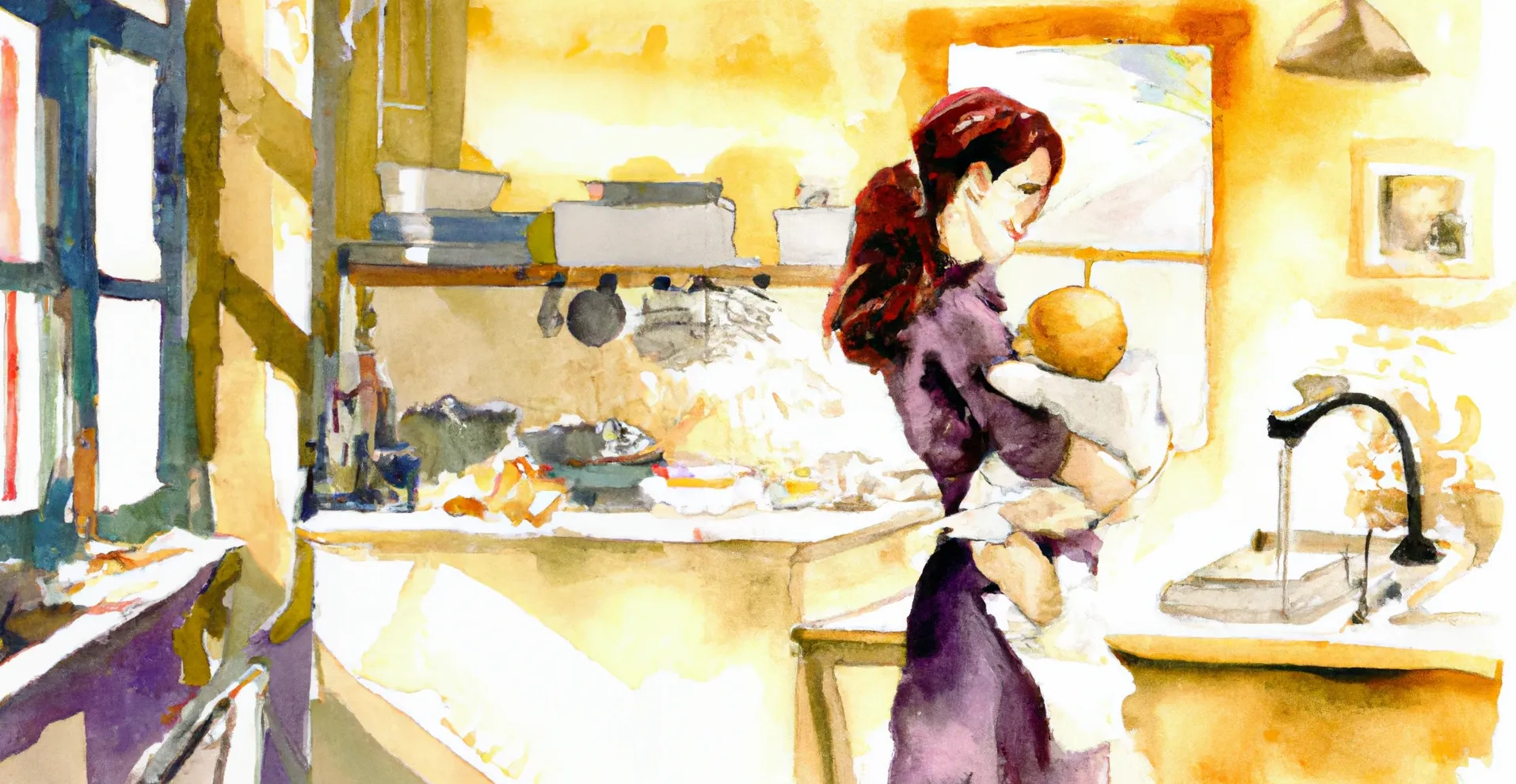Key Takeaways
- Your body uses iron daily to build hemoglobin, a protein in red blood cells that transports oxygen to vital organs and tissues.
- Your iron needs increase when you're pregnant because your body produces more blood to nourish your baby. To help satisfy your daily iron requirements, you’ll need to add more iron-rich foods to your meals and snacks.
- Many prenatal supplements offer iron, contributing to your total iron intake. Sometimes, you may need an additional iron supplement. Ask your dietitian for guidance if you’re concerned about your iron levels.
Iron is an essential mineral that needs replenishing through dietary sources and sometimes supplements.
Your body needs iron to build hemoglobin—a protein in red blood cells that carries oxygen to muscles, tissues, and vital organs.
When you’re pregnant, your iron needs increase to 27mg daily so your baby can receive an ample supply of nourishing, oxygenated blood to grow.
Keep reading to learn more about the recommended iron intake during pregnancy, and try any of our 15+ iron-rich snacks to help you meet your goals.
{{splash}}
Best Foods With Iron for Pregnancy
Iron is naturally found in animal and plant-based foods, so plenty of options exist.
Our list offers a handful of iron-rich foods you can eat while pregnant, and you can ask your dietitian for more personalized suggestions and recipes.
1. Lean Meats
Red meats like beef and lamb are rich in iron, with beef tenderloin offering up to 3mg of iron per 100g serving.
Although pork is also red meat, its iron levels are comparable to chicken or ground turkey, which is approximately 1mg per 100g serving.
Choosing leaner cuts, like tenderloin or extra-lean ground beef, up to three times a week helps you keep saturated fat intake low (fat that may raise cholesterol levels).
2. Beans
Beans are fiber-rich and offer protein, iron, and other essential nutrients.
White beans have the highest amount of iron, with 7.8mg per cup.
Enjoy them in a soup, stew, or a bean salad. Other noteworthy options are kidney beans, lentils, and green peas.
3. Quinoa
Quinoa is an ancient whole grain with fiber, protein, and iron. It’s a great addition to chili or can be used as a base for side dishes and salads.
Boiling quinoa in water can taste somewhat bland, but an easy way to add flavor is to boil it in low-sodium stock instead (you can use chicken or vegetarian).
One cup of cooked quinoa has 2.75mg of iron.
4. Spinach
Green, leafy spinach has an earthy and robust flavor. Raw spinach has 2.7mg of iron per 100g serving and can substitute lettuce in a salad, sandwich, or wrap.
Many people also add fresh spinach to smoothies.
You can also enjoy cooked spinach, with 1.0mg per 100g serving, in a soup, pasta sauce, casserole, or any recipe that calls for green, leafy vegetables.
5. Broccoli
Raw broccoli has approximately 0.7mg of iron per 100g serving.
While you shouldn’t rely on broccoli alone to satisfy your iron goals, it has other nutrients recommended for pregnancy, like calcium, folate, vitamin C, and choline.
It also pairs well with other iron-rich foods, like beef stir fry or a bean-based soup.
6. Kale
Another leafy green to include in your pregnancy meal plan is kale.
Raw kale has 1.6mg of iron per 100g serving and is great for hearty salads (massaging the leaves helps soften them).
Like spinach, cooked kale can be enjoyed in soups or with cooked eggs. Each 100g serving contains approximately 0.8mg of iron.
7. Sweet Potatoes
Eating mashed sweet potatoes or baked sweet potato fries can be so comforting.
One medium potato has approximately 1.1mg of iron and pairs perfectly with other iron-rich foods like beef or lamb.
Add seasoned baked sweet potatoes to leafy green salads with spinach or kale and your favorite vegetables for a fresh, iron-rich option.
Dress with a bright, citrus-forward salad dressing made with lemon, lime, olive oil, garlic, and Dijon mustard.
8. Fortified Cereals
Eighty countries—including the United States, fortify wheat-based products with iron and other essential nutrients, so you’ll also find cereals and other items that contain high iron levels.
Look at the nutrition label and choose the cereal with the highest iron content per serving. Cheerios are a great pick, with 8.1mg of iron per cup.
If you have gestational diabetes, you should also consider the added sugar content in a cereal. A dietitian can offer recommendations, or read our 5-day gestational diabetes meal plan for nourishing alternatives.
9. Pumpkin Seeds
Roasted pumpkin seeds (pepitas) taste nutty and have a satisfying crunch.
They’re rich in calcium and protein; a one-ounce serving has approximately 2.3mg of iron.
Sprinkle them onto yogurts, cereals, and salads, or use them to garnish soups.
{{local}}
10. Bok Choy
Bok choy is a type of Chinese cabbage with a peppery kick that adds earthy flavors to your dishes.
It can be added to soups and stir-fries or enjoyed on the grill. One cup of shredded and cooked bok choy has 1.77mg of iron.
11. Brussel Sprouts
You can eat cleaned raw brussel sprouts, but they’re quite tough to chew.
To make them more enjoyable, try using a grater or cutting them finely with a mandoline (picture a coleslaw-style salad.)
Raw Brussels sprouts offer 1.67mg of iron per half a cup.
Half a cup of cooked Brussels has 0.94mg of iron.
Remember, a serving size doesn’t equate to portion size, and eating more than half a cup of vegetables is perfectly reasonable when you’re hungry.
12. Tofu
Tofu is a popular plant-based protein source made with soybeans. It’s a highly versatile food sold in different textures, from silky to extra-firm.
You should choose the firmness based on your recipe. A stir fry might call for firmer tofus, while a smoothie will have better mouth-feel using a softer, silkier option.
Extra-firm tofu has 1.6mg of iron per 100g serving and has more iron than silky tofu with 0.9mg per 100g serving.
13. Eggs
One large egg has approximately 0.8mg of iron, which isn’t a lot on its own.
However, it can be paired with other iron-rich foods, such as a generous portion of cooked spinach.
You can also double up by having two cooked eggs at your meal or as a snack.
14. Raisins
Raisins can be a divisive food—you either hate or love them! But the small, dried fruits shouldn’t be written off without cause.
They’re rich in iron and very convenient to eat on the go.
A 100g serving has approximately 2.6mg of iron. You can also mix them into a salad or add them to home-baked goods.
If you’ve been diagnosed with gestational diabetes, you’ll need to monitor your dried fruit intake as it can impact your blood sugar levels.
15. Nuts
Nuts contain unsaturated fats and other essential nutrients, making them a great addition to your meal plan.
Enjoying a variety of nuts will widen your nutritional intake and help keep your snacks and meals more interesting.
Pistachios
One ounce of pistachios has 1.11mg of iron per serving. Enjoy them as a standalone snack, or add them to your salads.
Cashews
One ounce of cashews has 1.89mg of iron per serving. Cashews have a meaty texture and are excellent in stir-fries or curry stews.
Almonds
One ounce of almonds contains 1.05mg of iron per serving. They have a neutral flavor and can be added to almost any meal.
Almonds tend to be less expensive than pistachios or cashews, but local prices may vary.
Guidelines for Meeting Your Iron Needs During Pregnancy
Maintaining adequate iron levels during pregnancy prevents iron deficiency or anemia.
It reduces the risk of possible health effects for your growing baby, such as low birth weight and premature birth.
Recommended Daily Intake
Health professionals recommend pregnant people consume 27mg of iron daily.
Your doctor will assess your iron levels in your bloodwork and can tell you whether to focus on dietary changes or start taking a supplement.
How to Increase Iron Absorption
Iron in animal products (heme-iron) tends to be more easily absorbed than in plant-based options (nonheme iron).
Pairing nonheme iron with vitamin C-rich foods can increase its absorbability. Examples include strawberries, oranges, bell peppers, tomatoes, etc.
Calcium might interfere with iron absorption; you may want to take them at separate times during the day.
{{splash}}
Takeaway
Your iron requirements increase during pregnancy because your body produces more blood to nourish your growing baby.
Including more iron-rich foods can help you meet your daily iron requirements, but some people may also need an iron supplement.
If you’re concerned about your iron levels, you should meet with your physician for a proper assessment.
Work With a Dietitian
A prenatal dietitian can help you build an eating plan to help you and your growing baby thrive.
Find a dietitian who accepts insurance through Nourish.
Do you have any of these insurances?
Why Join Nourish's RD Network






Frequently Asked Questions
Some iron-rich foods you can enjoy during pregnancy include:
- Cooked lean cuts of red meat or poultry.
- Beans, including white beans and kidney beans.
- Dark leafy greens.
- Fortified wheat-based products, like cereals.
- Nuts, seeds, and some dried fruits like raisins.
You can also enjoy cooked fish and seafood from the FDA’s “Best Choices” list, which have low levels of Mercury and are safer during pregnancy.
Fresh fruits aren’t considered a rich source of iron, but they are naturally rich in vitamin C, which can aid with iron absorption from plant-based foods.
Pair beans and leafy greens with strawberries, oranges, berries, etc.
Dried fruits that contain iron include raisins, figs, apricots, dates, and prunes.
If fruit aggravates pregnancy-related acid reflux, you may need to find gentler options for your digestive system. Your dietitian can help.
Iron-rich foods combined with iron supplements are recommended to treat anemia in pregnancy.
Choose lean meats, dark leafy greens, fortified grains, eggs, and beans more often. Your dietitian can offer more personalized recommendations.































